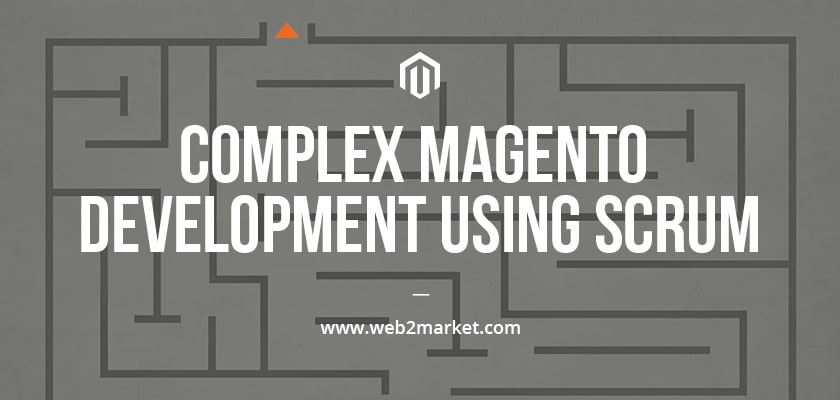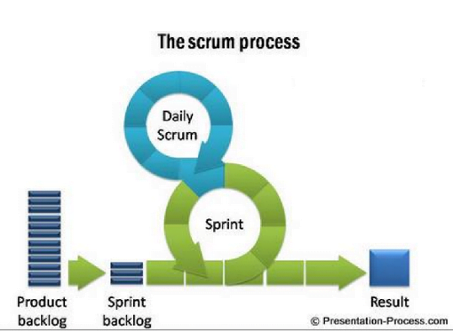
In this post, I’ll describe how Web 2 Market uses the Scrum project management methodology to design ecommerce website and deliver custom e-commerce sites that exceed their expectations quickly and on budget.
Keep in mind, this is the Scrum process WE use for complex Magento development. If you’re an expert project manager and you think you know better, tell us how! We’re always learning. We grow every day as we design ecommerce website.
The Benefits of Applying Scrum Methodology
We have used the waterfall project management methodology for 17 years, so we know it well. It worked fine on smaller projects with limited requirements, but as the complexity of our work has grown, defining requirements sometimes seems like a months long nightmare. All that work before even starting to code!
Scrum is an Agile methodology that offers many benefits over waterfall project management. Some of the most important benefits:
-
Adaptability
-
Client Centricrity
-
Continuous delivery of more features
-
Fastest launch of high value features
-
Regular feedback between developers and clients
-
Continuous improvement of the site
-
Sustainable pace of development
-
Faster problem resolution
-
High velocity of development
Having moved to Scrum, we’ve experienced many of the benefits of this methodology and highly recommend it to other development teams.
To learn more about the benefits of Scrum, check out this video:
An Overview of the Scrum Process
So how does Scrum work? When applying the methodology for complex Magento development, we think of Scrum as an iterative process that we loop through on a project until we’ve completed all the project requirements. As a result, we’ve typically produced a new Magento or AbleCommerce site.

Here’s a quick overview of the process:
1. Requirements Grooming Meeting
We’re making the assumption here that we’ve established the requirements for the new site in a separate quoting process (that’s another blog post for another time). The Requirments Grooming Meeting is for the developers and the product owner (client) to begin discussing priorities and features.
The meeting is “time-boxed” so that a limited amount of time is spent understanding the requirements. Requirements will be further refined as the client works directly with the developers on the project. The amount of time can vary from a half hour to 4 hours, depending on the scope of the project.
This meeting produces a Product Backlog. The Product Backlog is the list of features to be created.
2. Sprint Planning Meeting
Sprints are a set period of time in which the developers do their work. Typically, sprints last 30 days, but that varies according to the project. In the sprint planning meeting, the team (developers, client/product owner, and Scrum Master/project manager) meet to set goals. Having previously defined the requirements and set priorities in the Requirements Grooming meeting, the team consequently decides what seems important accomplish in the sprint.

3. Daily Scrum AKA Stand Up Meetings
These are frequent, short (15 minutes) meetings to let the Scrum Master help with any issues blocking progress. The developers report three especially important things to the Scrum Master:
-
What did I accomplish yesterday?
-
What will I probably do today?
-
Are any obstacles are impeding my progress?
Clients typically attend, but do not comment. It’s a good opportunity to keep up to date, and questions or concerns addressed to the developer directly, or the Scrum Master.
In a large project, they’re held daily. However, because our team members frequently work on multiple projects at the same time, we find it seems helpful to hold them less frequently. Probably a couple times a week.
4. Sprint Review Meeting
After working for 30 days, the development team now reports on progress. The “timebox” (amount of time set for the meeting) varies, but often is an hour. In addition, the developers review the sprint’s objectives and show what they’ve developed. This is another important opportunity for the client to see progress and provide feedback.
It is important to mention quality assurance and the launch process. On a new or updated site, the last sprint typically involves Web 2 Market testing, client user acceptance testing, and the launch process.
5. Result
The result is usually the launch of a new or updated Magento e-commerce site. However, it could also be a substantial new feature. Due to the variation in project size, it might have one sprint, or it might have as many as ten sprints.
About Fixed Cost Projects
If you’ve read this far, you’re probably pretty interested in the Scrum process. One oddity we deal with is how to quote projects done for a fix cost. It’d be nice if there was an iterative ‘Scrummy’ process for defining and controlling costs. There’s not. As a result, we design ecommerce website the old fashioned way by estimating hours for a rough set of requirements, then adding the hours to determine the project investment. Got a better way? We’d love to hear your thoughts.
Design eCommerce website Using Scrum
In conclusion, we find Scrum to be a process that makes our clients happy through continuous involvement and feedback. We benefit from a more efficient, sustainable development process. Everyone benefits from a new website that matches the customer’s needs, runs without bugs, and runs fast. We highly recommend it for the development of e-commerce sites. If you have any questions regarding complex Magento development using Scrum methodology, or have any ideas on project management or quoting projects that you’d like to share with us, then please contact us, we’d love to hear from you.
